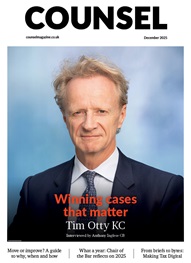*/
The country’s highest court heard fewer appeals and gave fewer judgments over the last year, despite sitting for more days, its annual report revealed.
The Supreme Court sat for 136 days in the year ending 31 March 2014, nine more than the previous year, but heard 31 (26%) fewer appeals and gave judgment in 34 (30%) fewer cases.
The report explained that this was due to longer hearings, a growth in appeals heard by panels of seven or nine justices and fewer linked appeals.
Applications for permission to appeal considered rose by 34% to 269, with requests to bring criminal appeals up from eight to 19 and a rise in public law cases about employment, housing and taxation. Applications to hear appeals about legal procedure fell from 38 to 22.
The court granted permission to appeal in a smaller proportion of judicial review, immigration and family law cases and handed down fewer judgments on crime, immigration and tax issues. There were more decisions relating to prisoner detention and contract law.
Litigants in person applying for permission to appeal stayed at 24 out of the total of 231. Supreme Court President, Lord Neuberger, said: “We have had an unusual number of particularly demanding cases, which is reflected in the fact that the average time between hearing and judgment has increased from last year, and the number of decisions is lower than last year.”
The country’s highest court heard fewer appeals and gave fewer judgments over the last year, despite sitting for more days, its annual report revealed.
The Supreme Court sat for 136 days in the year ending 31 March 2014, nine more than the previous year, but heard 31 (26%) fewer appeals and gave judgment in 34 (30%) fewer cases.
The report explained that this was due to longer hearings, a growth in appeals heard by panels of seven or nine justices and fewer linked appeals.
Applications for permission to appeal considered rose by 34% to 269, with requests to bring criminal appeals up from eight to 19 and a rise in public law cases about employment, housing and taxation. Applications to hear appeals about legal procedure fell from 38 to 22.
The court granted permission to appeal in a smaller proportion of judicial review, immigration and family law cases and handed down fewer judgments on crime, immigration and tax issues. There were more decisions relating to prisoner detention and contract law.
Litigants in person applying for permission to appeal stayed at 24 out of the total of 231. Supreme Court President, Lord Neuberger, said: “We have had an unusual number of particularly demanding cases, which is reflected in the fact that the average time between hearing and judgment has increased from last year, and the number of decisions is lower than last year.”


Chair of the Bar reflects on 2025
Q&A with criminal barrister Nick Murphy, who moved to New Park Court Chambers on the North Eastern Circuit in search of a better work-life balance
Revolt Cycling in Holborn, London’s first sustainable fitness studio, invites barristers to join the revolution – turning pedal power into clean energy
Rachel Davenport, Co-founder and Director at AlphaBiolabs, reflects on how the company’s Giving Back ethos continues to make a difference to communities across the UK
By Marie Law, Director of Toxicology at AlphaBiolabs
AlphaBiolabs has made a £500 donation to Sean’s Place, a men’s mental health charity based in Sefton, as part of its ongoing Giving Back initiative
Professor Dominic Regan and Seán Jones KC present their best buys for this holiday season
Little has changed since Burns v Burns . Cohabiting couples deserve better than to be left on the blasted heath with the existing witch’s brew for another four decades, argues Christopher Stirling
Six months of court observation at the Old Bailey: APPEAL’s Dr Nisha Waller and Tehreem Sultan report their findings on prosecution practices under joint enterprise
Despite its prevalence, autism spectrum disorder remains poorly understood in the criminal justice system. Does Alex Henry’s joint enterprise conviction expose the need to audit prisons? asks Dr Felicity Gerry KC
With automation now deeply embedded in the Department for Work Pensions, Alexander McColl and Alexa Thompson review what we know, what we don’t and avenues for legal challenge